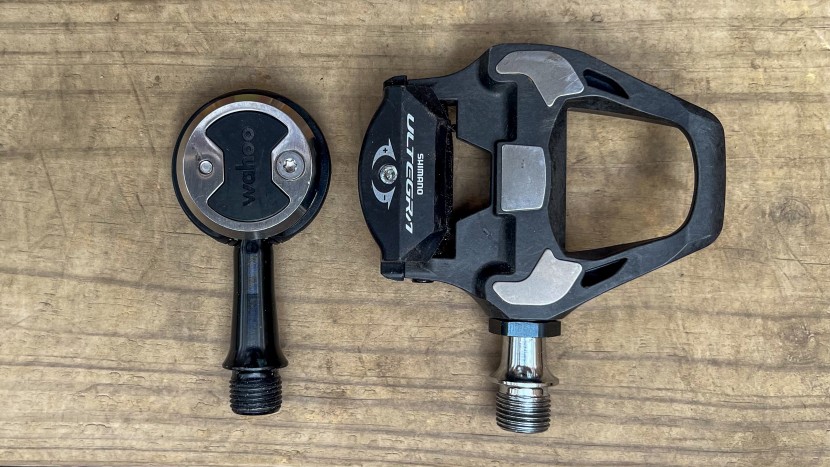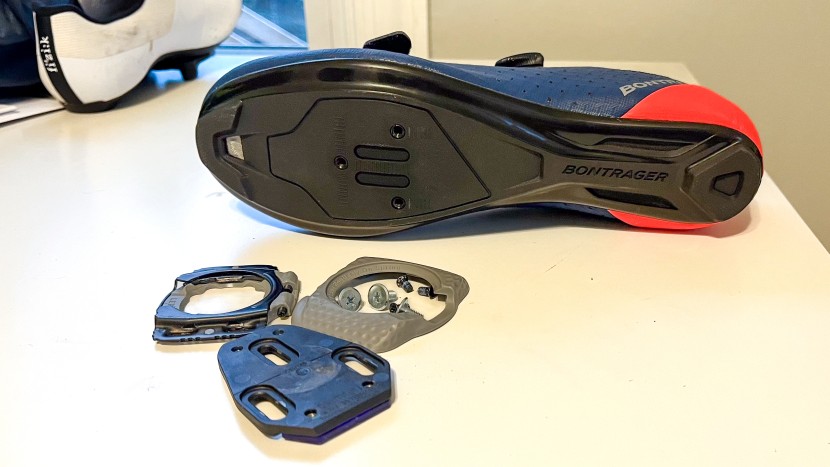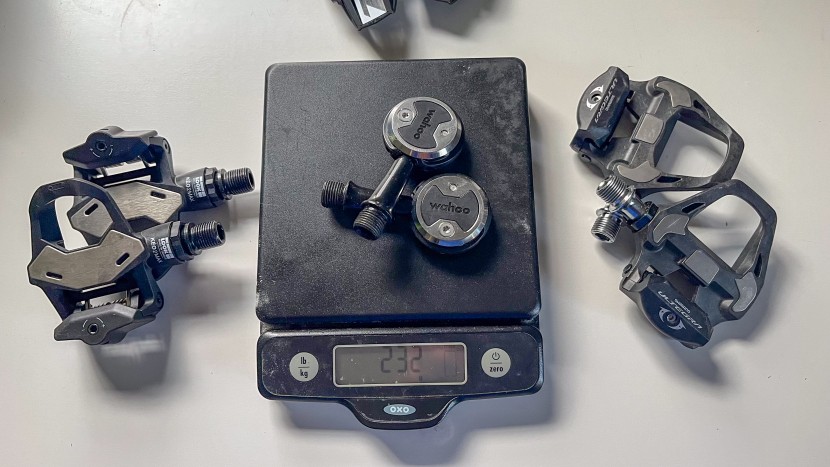We spent months with each of the sets of pedals that we've reviewed, thrashing them in the sun, rain, and (occasional) snow and in road races, long rides, multi-day tours, and even a little bit of unadvisable gravel. We also scoured online forums and reviews to see if our experience lined up with that of others. Then we objectively assessed the qualities that we could, measuring with calipers and scales. Through it all, we kept our six criteria top of mind so all pedals would be checked on the same metrics.
Ease of Entry
Aside from assessing one sided versus two sided entry, this was a challenging but essential metric for us to test. We were able to differentiate the pedals due to our long experience as testers and the notes we took out on our rides. Pedals that had sharp edges and very slippery surfaces were down-graded, as they were tough to get on and painful to slip off of. Similar downgrades went to pedals that didn't hang properly for clipping in. A one-sided pedal needs to hang at a slight backward angle so you can sweep your foot forward into it. If they hang upside down or are angled forward, it's really tough to get into them.
Throughout all of our testing, we didn't assess any metric immediately, since all pedals have a learning curve. Different pedals, eve different ones from the same brand, clip and unclip differently and take some time to get used to. This break in and adjustment process also helped us assess these metrics with both new and worn cleats. Pedals that did well were smooth and predictable to clip into even as the cleats wore down. Some pedals are very sensitive to cleat wear and got harder to get into throughout our testing process. Others were smooth and easy no matter what we did to the cleats. We dug hard into this aspect to make sure we had a great assessment for you.
Ease of Exit
Ever fall down at an intersection while trying to unclip? We certainly have. Every last one of us. And we don't want to ever do it again. That's why this category is key. Being able to unclip safely and effectively is overlooked and assumed, but that doesn't mean that all pedals do it well. That was definitely our experience while testing pedals. Do you have to push against an increasingly strong spring? Is the release point fuzzy when the cleat starts to wear? Is the cleat difficult to tighten and so slips around sometimes? We factored in all of those questions and more in our testing.
Similar to how we tested Ease of Entry, we made sure to give each pedal a safe break-in period while we rode our stationary trainers. After understanding them a bit, we got them out on the road for a more intense test. And we clipped and unclipped, clipped and unclipped, over and over again. And then took copious notes. We upgraded those who were consistent throughout all our usage, downgraded those that weren't, and also noted how the release springs felt.
We combined Ease of Exit with predictability of exit as well. No one wants to pull their foot out of a pedal unexpectedly. That's a recipe for a crash. Fortunately, one of our testers is a criterium sprinter, so we were able to put them through the wringer in that category. Fortunately, he didn't have any surprise exits during a race, though there were some in training and those pedals received appropriate downgrades.
Adjustability
For adjustability, we adjusted the heck out of all these pedals and cleats, getting in there with little screwdrivers and Allen wrenches. We looked at how easy it was to tweak the settings, whether the pedals offered a good range of adjustments (float, fore-aft, lateral, and rotational), and if the instructions made sense without having to crack open a dictionary. To round it out, we mixed in some online chatter to see how our findings matched up. This hands-on and real-world approach helped us figure out which pedals are ready to meet you wherever you are on your cycling journey, making the hunt for the perfect pedal a breeze.
After some basic assessments, we kicked things up a notch by not just stopping there. We were curious to see how these pedals held up over time as riders made tweaks here and there to find their sweet spot. The ease of getting the settings just right without having to pull out a toolbox every time was something we paid close attention to. Our testers shared their two cents on whether they felt the pedals became more of a friend or foe on their daily rides as they tinkered with settings. We also threw in some rougher rides to see if the pedals would keep their settings or throw a little surprise our way. And we took copious notes throughout.
Weight
Getting pedal weight wasn't as straightforward as you would expect. Brands usually report on the weight of the pedals themselves, maybe the pedals and the cleats, but rarely do they tell you how much everything weighs, bolts included. Since you can't use the pedals without the bolts, we thought it best to assess the whole thing, pedal, cleat, and bolts. This led to some surprisingly high weights for some pedals, all things included, validating our approach of getting all the details.
Build Quality
When it came to scrutinizing the build quality of road cycling pedals, we went full detective mode. Each pedal went through a series of real-world tests on the road, where they faced the wrath of potholes, gravel, and the everyday wear and tear. Our crew of cyclists, with their eagle eyes, were on the lookout for any signs of distress, be it a wobble, squeak or a loose part. We even took a peek under the hood, examining the materials and construction to see what these pedals are really made of. Was it a solid piece of engineering or something that just looked good on the outside? We also paid a visit to our local bike maestros, whose seasoned hands have seen it all, to get their take on which pedals could go the distance.
We dived into the depths of cycling forums and scoured online reviews to see what other pedal pundits had to say. Did these pedals stay loyal companions or did they start showing their true colors after a few rides? Our testers shared tales of their journey, noting if any pedal needed some TLC or sent out a major SOS along the way. We also kept tabs on how they looked after facing the music - because who doesn't like a pedal that can hold its own in the looks department even after a muddy, wet ride? Through the mud, sweat, and gears, we sifted out the champs from the chumps, aiming to find the pedals that wouldn't flinch at the sight of a rough patch and would keep riders spinning smoothly mile after mile.





